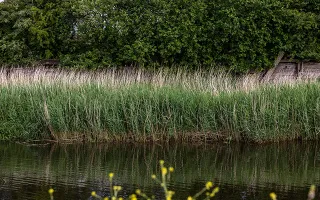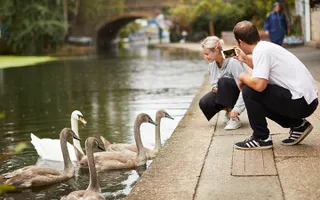Caddisfly facts
Scientific name: Trichoptera
Diet: Aquatic plants and decaying organic matter
Predators: Birds, fish, small mammals and other invertebrates
Size: 2mm-3cm
Weight: 0.01-7.22mg
Lifespan: A few weeks to several months
About caddisflies
There are about 200 species of Trichoptera, an order of small insects that range from 2mm to 3cm in size. Some of the most common species you’ll find by our canals are the cinnamon sedges (Limnephilus lunatus), grousewing caddisfly (Mystacides longicornis) and long horn sedge (Oecetis ochracea).
Caddisfly and our canals
Caddisflies are water-loving insects and are typically found around slow-flowing rivers, ponds and canals. While most live underwater as larvae, the Enoicyla pusilla is given the name ‘land caddis’ for its unusual habit of living in woodlands among leaf litter. Caddisflies build their own shelters, which are cases made of the habitats they live in, like stone, sand, leaves or twigs, and spun together with their own silk.
How to identify a caddisfly
As adults, caddisflies look a lot like moths. But unlike moths, they fold their wings back. These are also covered in fine hairs.
You might struggle to identify individual adult species – some have long antennas, while others, like the grousewing caddisfly, have patterned wings. As larvae, their unique casing makes them easier to tell apart.







